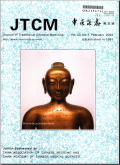Ginsenoside Rb1 alleviates chronic intermittent hypoxia-induced diabetic cardiomyopathy in db/db mice by regulating the adenosine monophosphate-activated protein kinase/Nrf2/heme oxygenase-1 signaling pathway
摘要OBJECTIVE:To examine the protective effect of ginsenoside Rb1(Rb1),the main component of Renshen(Radix Ginseng),on cardiomyopathy in db/db mice exposed to chronic intermittent hypoxia(CIH)and explore the potential underlying mechanism of Rb1 in treating diabetic cardiomyopathy(DCM).METHODS:The db/db mice were randomly separated into five groups:normal control group,model group,Rb120 mg/kg group,Rb1 40 mg/kg group,and glucagon-like peptide-1(GLP-1)group.Mice were exposed to air-condition or CIH for 8 weeks,and Rb1 and GLP-1 were administrated before CIH exposure every day.Oral glucose tolerance test(OGTT),intraperitoneal insulin tolerance test(IPITT),total cholesterol(TC),triglyceride(TG),and high-density lipoprotein cholesterol(HDL-C)were detected to evaluate glycolipid metabolism.The level of insulin was detected by a mouse enzyme-linked immunosorbent assay(ELISA).Cardiac function was detected by echocardiography,and myocardial pathology was observed by hematoxylin-eosin and Masson staining.The expression of collagen Ⅰ and collagen Ⅲ was detected by immunohistochemistry.Adenosine monophosphate-activated protein kinase(AMPK)/Nrf2/heme oxygenase-1(HO-1)signaling pathway was detected by Western blot and immunofluorescence.RESULTS:Rb1 treatment could improve glucose tolerance and the level of cardiac function indexes,and inhibit the level of oxidative stress indexes and the expression of collagen Ⅰ and collagen Ⅲ.Moreover,Rb1 treatment enhanced AMPK phosphorylation and increased Nrf2 and HO-1 expression.CONCLUSION:Rb1 treatment alleviated CIH-induced diabetic cardiomyopathy and glycolipid metabolism disorders in db/db mice by inhibiting oxidative stress and regulating the AMPK/Nrf2/HO-1 signaling pathway.
更多相关知识
- 浏览0
- 被引0
- 下载0


相似文献
- 中文期刊
- 外文期刊
- 学位论文
- 会议论文



 换一批
换一批 换一批
换一批



